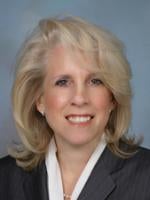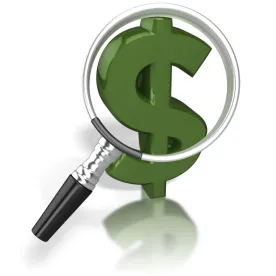In response to Cadwalader’s recent Clients & Friends Memo, Federal Investigators Prepare to Investigate and Prosecute Fraud in Emergency Loan Programs,1 Cadwalader has heard from a number of borrowers under the CARES Act’s Paycheck Protection Program (PPP) who are now questioning whether the loan they took was “necessary.” This Clients & Friends Memo lays out the state of play regarding loan “necessity” under the PPP and steps companies can take to reduce their risk of audit and investigation.
In the past several weeks, there has been public backlash over reports that businesses not normally considered “small” (in the public’s mind) and that are otherwise seemingly financially healthy have submitted applications for, and received funding under, the PPP. Apart from isolated reports regarding certain applicants, as of yet we are not aware of any detailed public data available regarding individual applicants, so it is not clear to what extent this is actually true.2 Nonetheless, media reports have led to the widespread belief that PPP funds were not being made available to the most needy of businesses. According to these reports, many eligible companies were unable to obtain PPP loans before the first round of the program’s funding was exhausted. These reports state that other well-known and arguably larger companies like Shake Shack and Ruth’s Chris Steak House were able to obtain financing, however.
In response to this backlash, on April 24, 2020, the Treasury Department and the Small Business Administration (SBA) issued FAQ #31, reminding businesses that, when submitting PPP application the business “must certify in good faith that their PPP loan request is necessary” and cautioning businesses that, when making this certification the business should “tak[e] into account their current business activity and their ability to access other sources of liquidity sufficient to support their ongoing operations in a manner that is not significantly detrimental to the business.” The FAQ further states that “it is unlikely that a public company with substantial market value and access to capital markets will be able to make the required certification in good faith, and such a company should be prepared to demonstrate to SBA, upon request, the basis for its certification.” The FAQ then ominously states that “[a]ny borrower that applied for a PPP loan prior to the issuance of this guidance and repays the loan in full by May 7, 2020 will be deemed by SBA to have made the required certification in good faith”3 – encouraging publicly traded companies and other companies with adequate liquidity to return their PPP loans by next week.
This uncertainty regarding which businesses are truly worthy of a PPP loan stems from the CARES Act itself. The CARES Act included an eligibility requirement for a PPP loan based on a business having an employee headcount of 500 or fewer employees.4 This differs from the approach used by the SBA for its other small business programs, in which a business is determined to be “small” based alternatively on employee headcount or annual revenues, depending on the industry involved.5 This in turn led to the possibility that some businesses with large revenue streams would be eligible for a PPP loan so long as its headcount was 500 or below – even though the business would not have been considered “small” by the SBA or eligible for other forms of SBA funding.
The CARES Act further waived the “affiliation” standards for entities in the Accommodation and Food Service Industry (NAICS code 72), allowing businesses in these industries to apply for a PPP loan if affiliated with, or even if a wholly owned subsidiary of, another otherwise healthy business.6 In addition, the SBA issued new guidance on “affiliation” for PPP applicants generally, adopting objective standards based on majority control.7 While this guidance was undoubtedly intended to speed the ability of applicants to complete PPP loan applications and obtain funding promptly, it also may have led to the belief that applicants with financial links to other non-controlling entities were now able to apply.
The CARES Act did stipulate that “[a]ny eligible borrower applying for a [PPP loan] shall make a good-faith certification that … the uncertainty of economic conditions as of the date of the application makes necessary the loan request to support the ongoing operations of the recipient.”8 This certification requirement also appears in the application form (SBA Form 2483) used by lenders to originate PPP loans (and is a required disclosure in application forms for those lenders that choose to develop their own application):
The authorized representative of the Applicant must certify in good faith to all of the below by initialing next to each one:
…
_____ Current economic uncertainty makes this loan request necessary to support the ongoing operations of the Applicant.9
However, in a somewhat inconsistent fashion, the CARES Act simultaneously waived the requirement applicable to all other SBA loans that the “small business concern is unable to obtain credit elsewhere.” The “credit-elsewhere” requirement is a statutory provision in the Small Business Act10 and is reflected in SBA regulations.11 As set forth in the Act, the credit-elsewhere requirement is a bar on SBA financing if the applicant can obtain credit elsewhere “on reasonable terms and conditions to the individual loan applicant from non-Federal, non-State, or non-local government sources.”12 As implemented by the SBA, the credit-elsewhere requirement is a procedural requirement imposed on lenders; SBA lenders are required to certify to the SBA that the lender has determined that the applicant is unable to obtain credit elsewhere as required by the Act.
In its first PPP guidance issued to the public on March 31, 2020, the Treasury Department stressed to borrowers there was no need for the borrowers to determine whether other sources of funding were available to them:
Do I need to first look for other funds before applying to this program?
No. We are waiving the usual SBA requirement that you try to obtain some or all of the loan funds from other sources (i.e., we are waiving the Credit Elsewhere requirement).13
This undoubtedly led to the belief that businesses able to tap other sources of financing or liquidity would be permitted to obtain a PPP loan, because the applicant was under no obligation to look for other sources of funds.
The Interim Final Regulations released by the SBA three days later, on April 2, 2020, characterized the waiver of the credit-elsewhere requirement somewhat differently, though:
- Do lenders have to apply the “credit elsewhere test”?
No. When evaluating an applicant’s eligibility lenders will not be required to apply the “credit elsewhere test” (as set forth in section 7(a)(1)(A) of the Small Business Act (15 USC 636) and SBA regulations at 13 CFR 120.101).14
The SBA’s regulation said nothing about whether or not the borrower needed to look for other sources of funding, but only that the lender did not need to certify that the lender had independently determined that, with respect to that particular borrower, credit was not available elsewhere.
Given the foregoing, the widespread confusion regarding PPP eligibility is understandable. Nonetheless, it is clear that the Treasury Department now believes that certain borrowers with ready access to financing are not eligible for PPP financing. While the Treasury Department has not gone so far as to state that PPP borrowers should have first sought to obtain credit from non-SBA sources, the Treasury Department has indicated that applicants with “the ability to access other sources of liquidity” may be ineligible if those sources can be accessed “in a manner that is not significantly detrimental to the business.” This apparently includes not only businesses that have access to the capital markets,15 but also private companies “with adequate sources of liquidity,” perhaps including private companies with sufficient cash reserves or existing lines of credit.16
As described in Cadwalader’s recent Clients & Friends memo,17 a borrower under the PPP may be audited. According to PPP FAQ #39, SBA will “review all loans in excess of $2 million, in addition to other loans as appropriate.”18 If a borrower’s loan application and subsequent use of funds do not appear to comport with the PPP’s regulatory requirements, the borrower could face civil and criminal investigations. Publicly traded companies and their affiliates, as well as private companies “with adequate sources of liquidity,” should consult counsel to consider whether any previously borrowed PPP loan funds should be returned prior to May 7, 2020. If the decision is made not to return the funds, the business should fully document why the obtaining of PPP loan funds was “necessary” based on the particular circumstances faced by that business.
1 Cadwalader, Wickersham & Taft, COVID-19 Update: Federal Investigators Prepare to Investigate and Prosecute Fraud in Emergency Loan Programs (Apr. 24, 2020).
2 The Treasury Department’s PPP report issued on April 16 provides some insight regarding the loans that were approved under the first phase of the PPP involving $349 billion of appropriated funds. In that phase, roughly two-thirds of the PPP dollars were disbursed in loan amounts of $350,000 or more. This means that two-thirds of PPP dollars were disbursed to businesses with annual payrolls of roughly $1.7 million (excluding highly compensated employees whose payroll costs were not eligible for PPP funding). More than a quarter of the PPP dollars were disbursed to companies with nearly $10 million in annual payroll costs (again, excluding highly compensated employees). A partial list of PPP borrowers can be gleaned from public filings. See NBC News, Which Companies Are Returning Their PPP Loans? Here’s the List (April 28, 2020). Looking ahead, as required by the CARES Act, the Pandemic Response Accountability Committee website (https://pandemic.oversight.gov/track-the-money) will soon report more detailed information about individual recipients in a user-friendly and searchable format.
3 Paycheck Protection Program Loans: Frequently Asked Questions, FAQ #31 (Apr. 23, 2020).
4 Public Law 116-136, § 1102 (2020).
5 See 13 C.F.R. § 120.121.
6 CARES Act, supra note 4, § 1102.
7 U.S. Small Business Administration, Affiliation Rules Applicable to U.S. Small Business Administration Paycheck Protection Program (Apr. 3, 2020).
8 CARES Act, supra note 4, § 1102.
9 SBA Form 2483, p. 2.
10 15 U.S.C. § 636(a)(1)(A)(i).
11 13 C.F.R. § 120.101.
12 15 U.S.C. § 632(h).
13 Treasury Department, Paycheck Protection Program (PPP) Information Sheet: Borrowers, p. 2 (Mar. 31, 2020).
14 Small Business Administration, Interim Final Regulation, Business Loan Program Temporary Changes; Paycheck Protection Program § 3(c), 85 Fed. Reg. 20811, 20815-16 (Apr. 15, 2020).
15 FAQ #31, supra note 3.
16 Paycheck Protection Program Loans: Frequently Asked Questions, FAQ #37 (Apr. 28, 2020).
17 Cadwalader, Wickersham & Taft, COVID-19 Update: Federal Investigators Prepare to Investigate and Prosecute Fraud in Emergency Loan Programs (Apr. 24, 2020).
18 Paycheck Protection Program Loans: Frequently Asked Questions, FAQ #39 (Apr. 29, 2020).







 />i
/>i
